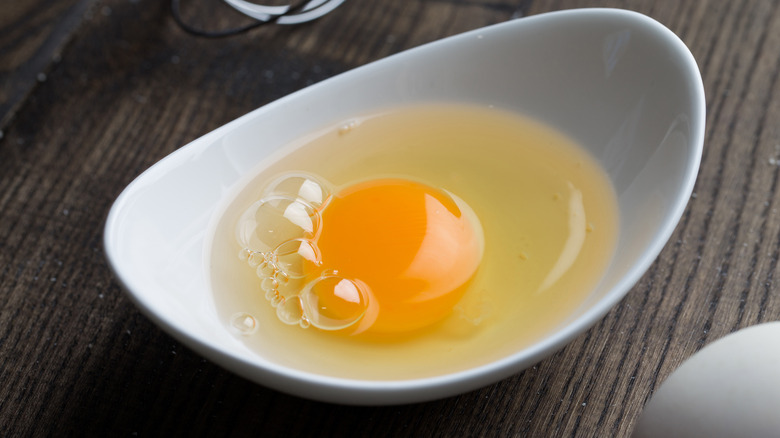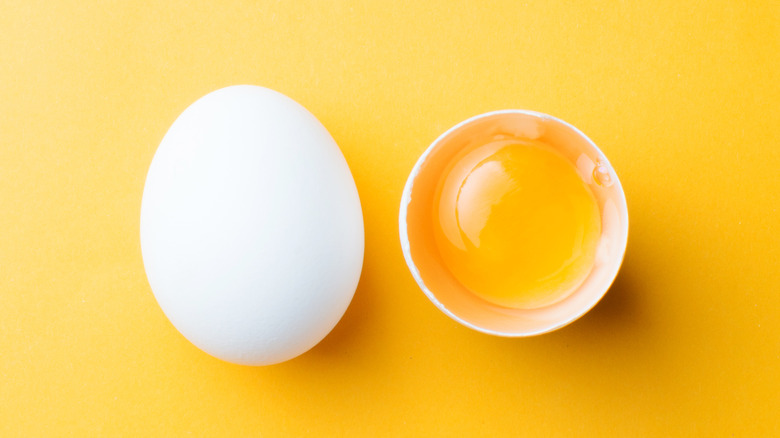What The White Strings In Eggs Really Are
If you've ever cracked eggs for cooking you've undoubtedly noticed what appears to be some sort of white stringy stuff along with the yolk and albumen. Everyone notices, and almost no one ever bothers to find out what it is, so it's a good thing this anatomical egg feature is completely safe to eat. As a matter of fact, per What's Cooking America, it's almost a guarantee of egg freshness. But first things first: What is it?
According to Taste of Home, the white strings are called chalaza in the singular, or chalazae in the plural. There should be two found in each egg, as their function is to keep the yolk safe, healthy, and suspended in the center of the shell, so that it doesn't push against the sides. It's a perfect example of the elegance of nature, really, since the chalazae essentially function as an architectural feature — as rope-like scaffolding holding the yolk in place from the top and bottom of the shell membrane — but as soon as the egg is cracked they're just simple strings of protein you can safely eat.
What's in an egg
As What's Cooking America observes, "the more prominent the chalazae, the fresher the egg." So not only should you not let what the American Egg Board refers to as "twisted, cord-like strands of egg white" freak you out, you should definitely want them prominently displayed in your raw eggs. As a matter of fact, their absence should be taken as a warning sign that your eggs are old, and thus it might be a good idea to check their expiration date. Chalazae disappear when cooking, although as Taste of Home notes, you might want to strain them for smoothness before making a dessert custard.
EatingWell refers to chalazae as one of the four visible parts of the egg, along with the shell, yolk, and albumen (the part used in egg white omelets). The shell, of course, evolves during the egg laying process as protective covering, and is almost entirely made of calcium carbonate, per the U.S. Department of Agriculture. The chalazae, embedded in the albumen inside the shell, is actually made of protein, another of the many health benefits offered by eggs, and yet another reason Healthline refers to the egg as "nature's perfect food."

